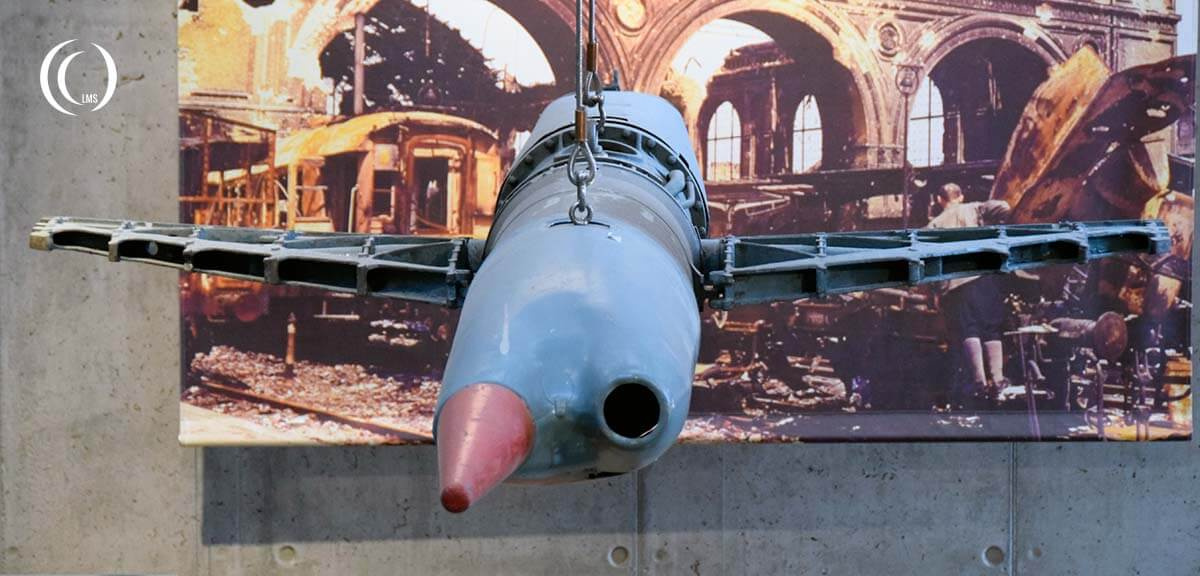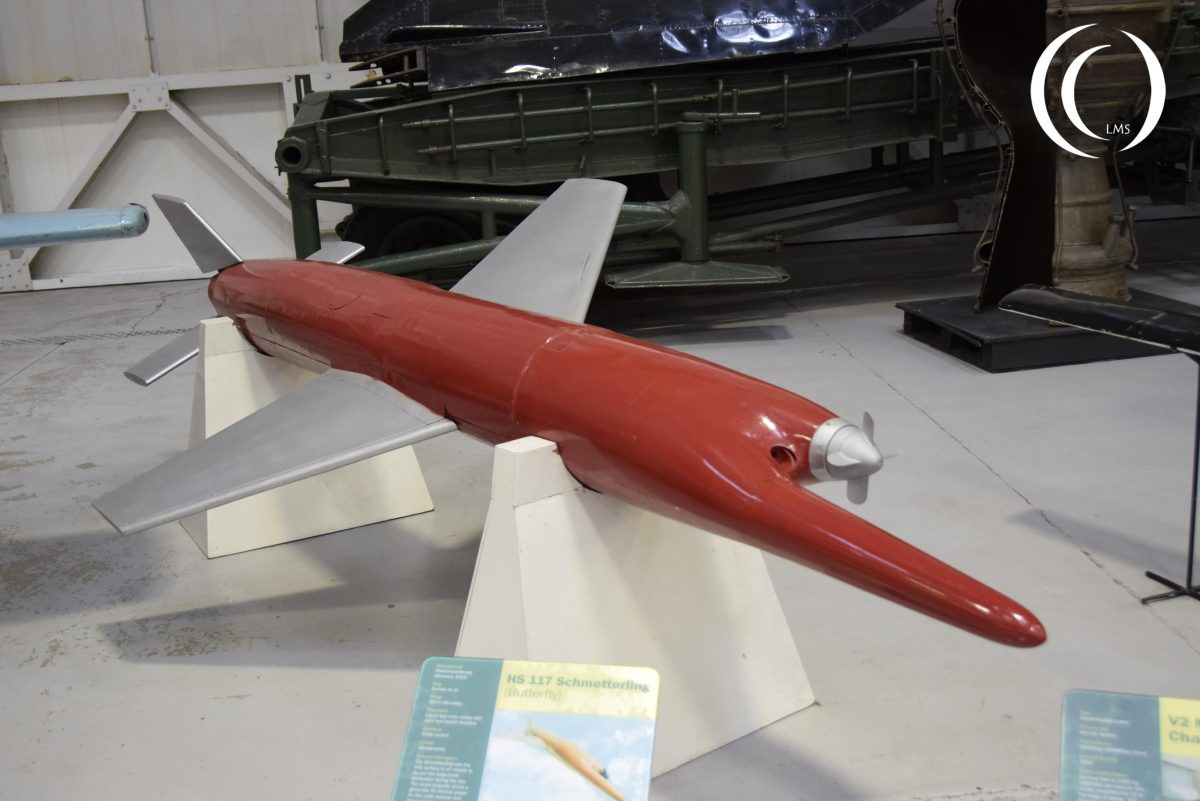
Professor Herbert A. Wagner and his team developed the Henschel Hs 117 Schmetterling – Butterfly. A surface to air radio-guided missile. Henschel offered it to the Reichsluftfahrtministerium (the German Air Ministry) but they were not interested in 1941.
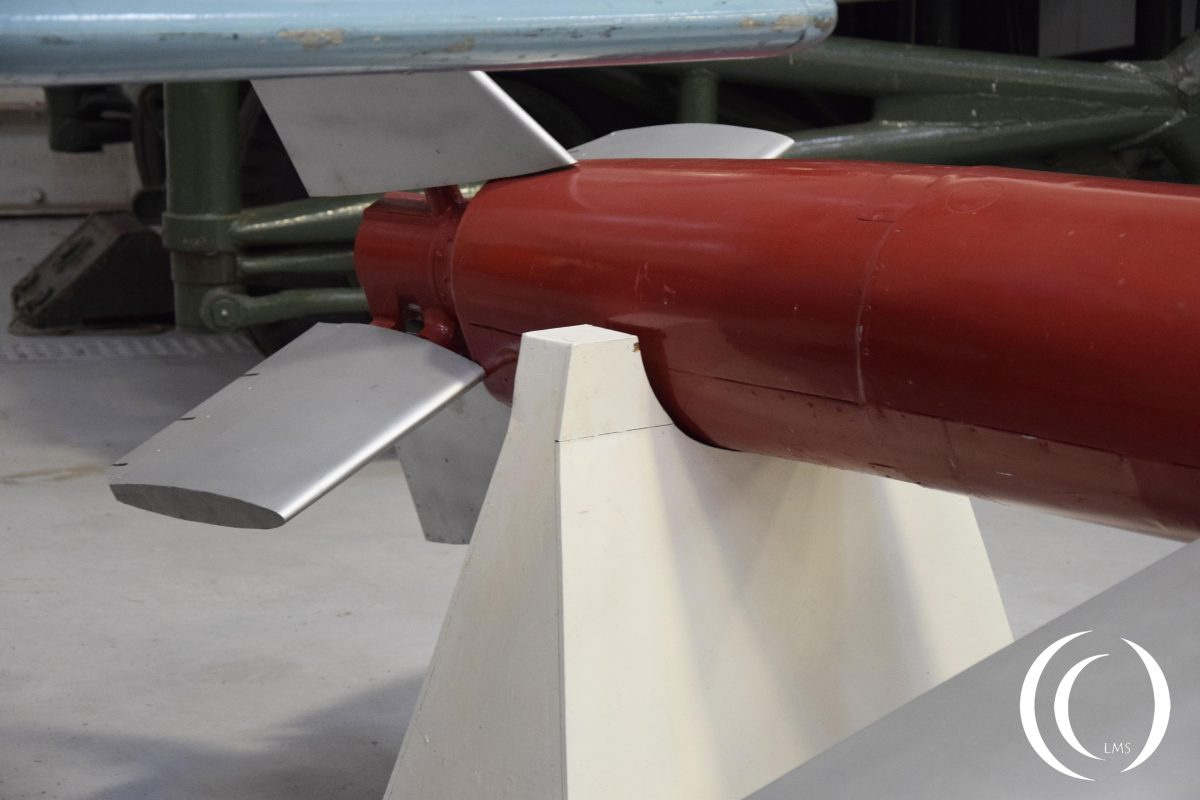
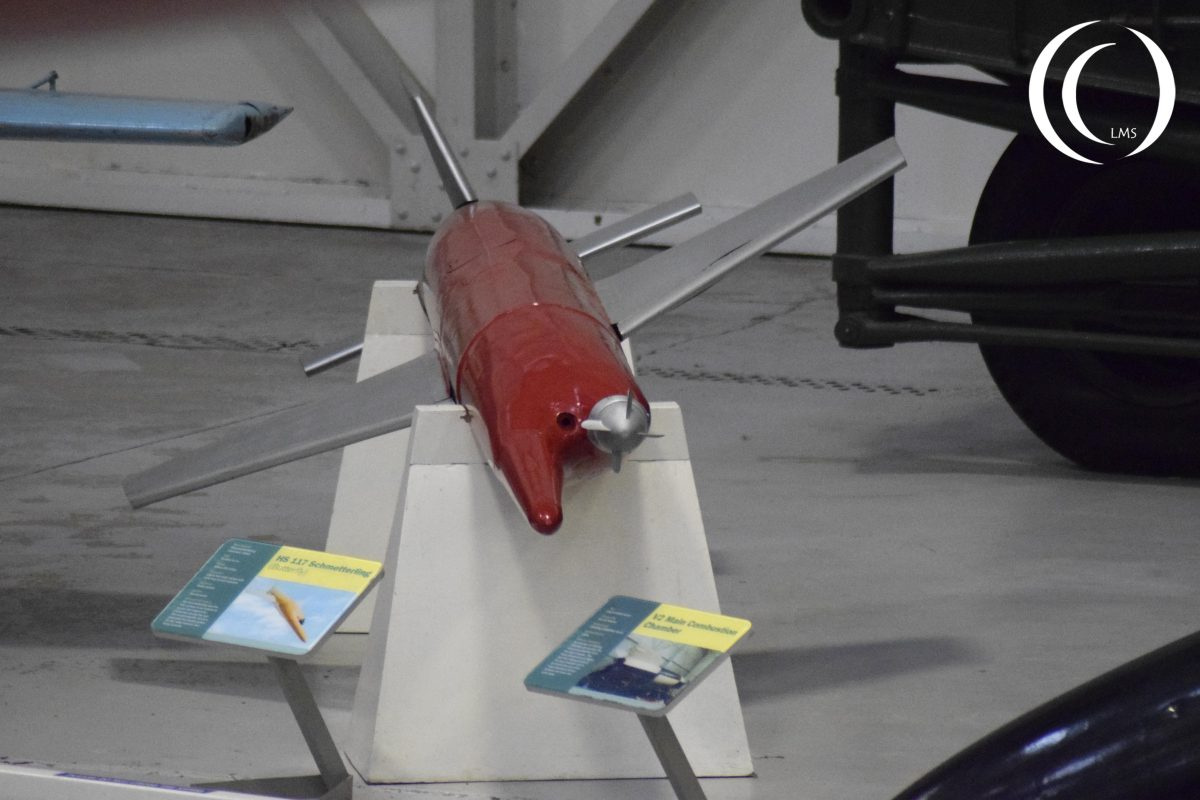
The Hs 117 had a length of 4.29 m and a take-off mass of 400 to 450 kg. It had short swept wings and a cruciform tail so that its design resembled an airplane. The bow of the fuselage was asymmetrical and ended in two points. The longer one housed the 25 kg warhead; the shorter one carried a small propeller at its tip, which was set in motion by the wind and drove a small generator that served to power the controls. It had a liquid rocket engine and used two Schmidding side rockets, One above and one under the fuselage. The booster rockets were dropped after four seconds of thrust. The Schmetterling was fired from a foundation of a 3,7 cm anti-aircraft gun and could reach a height of 6000 – 9000 meters flying at a speed of 700 – 1000 kilometers per hour.
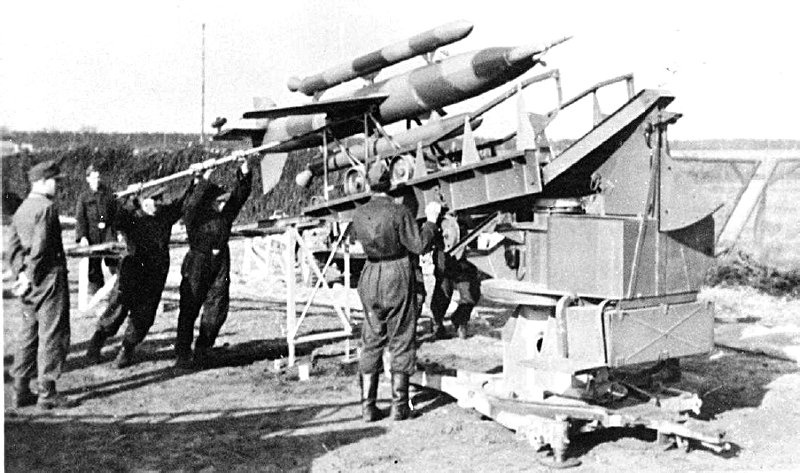
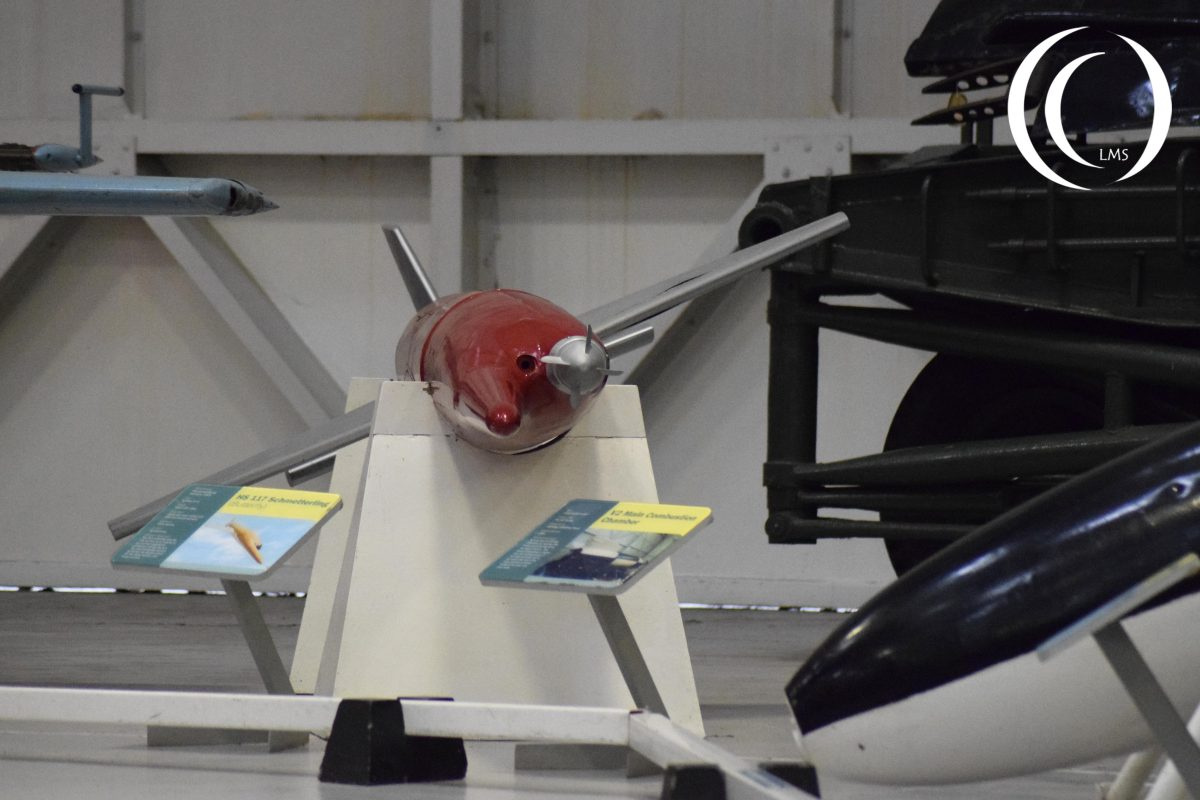
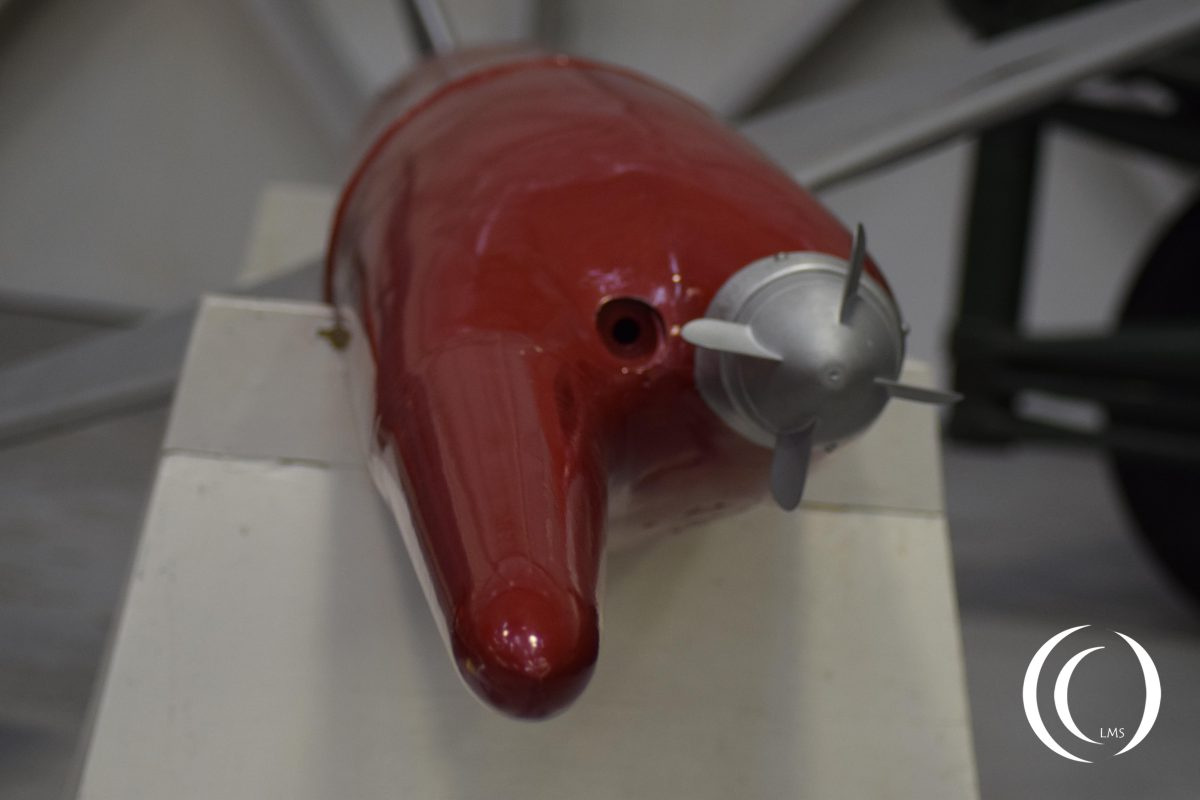
The missile was observed by the operator from the ground and guided to the target by radio. The use of radar for steering was under discussion. The missile was aimed through a periscope and controlled with a joystick via a radio link. A flare in the tail ensured that the rocket could be followed during the flight. The radio link was maintained via a Kehl-Straßburg system, code name “Parsival” (Funkgerät FuG 203/ Fug 230). Four different radio frequencies were used for control, a fifth was used to operate the explosive charge.
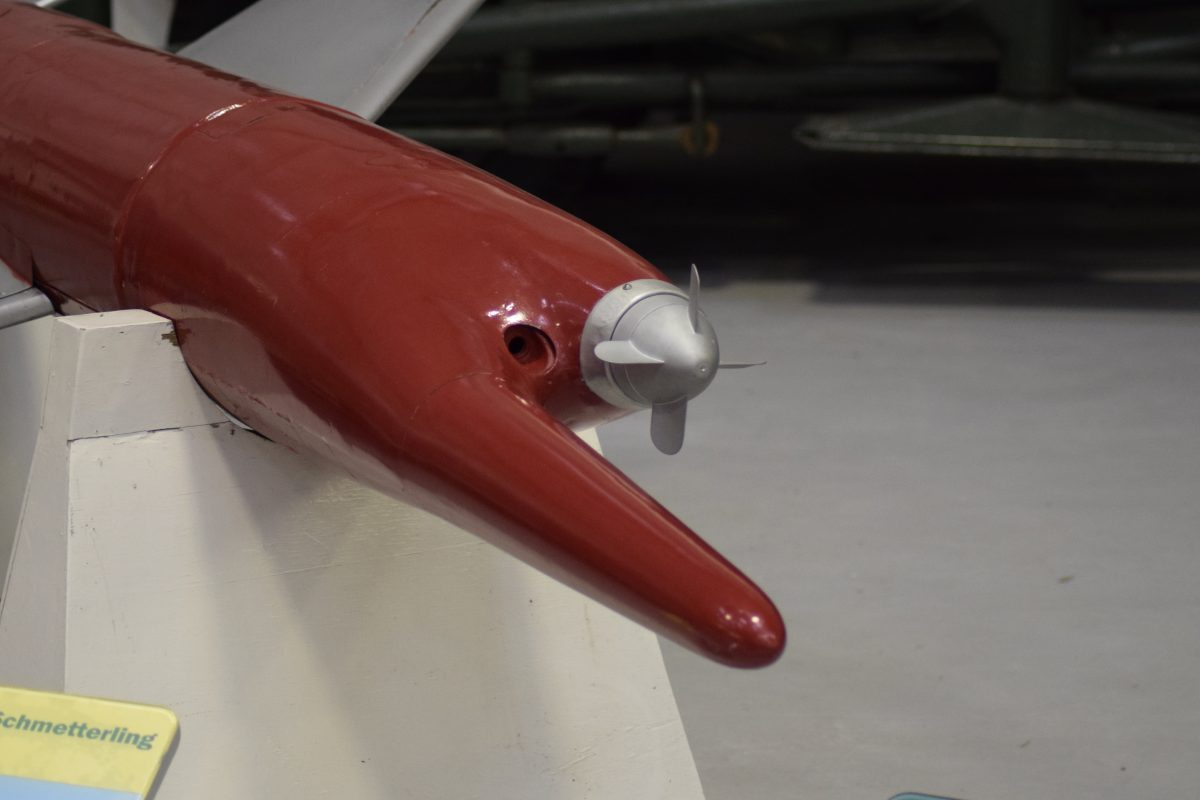
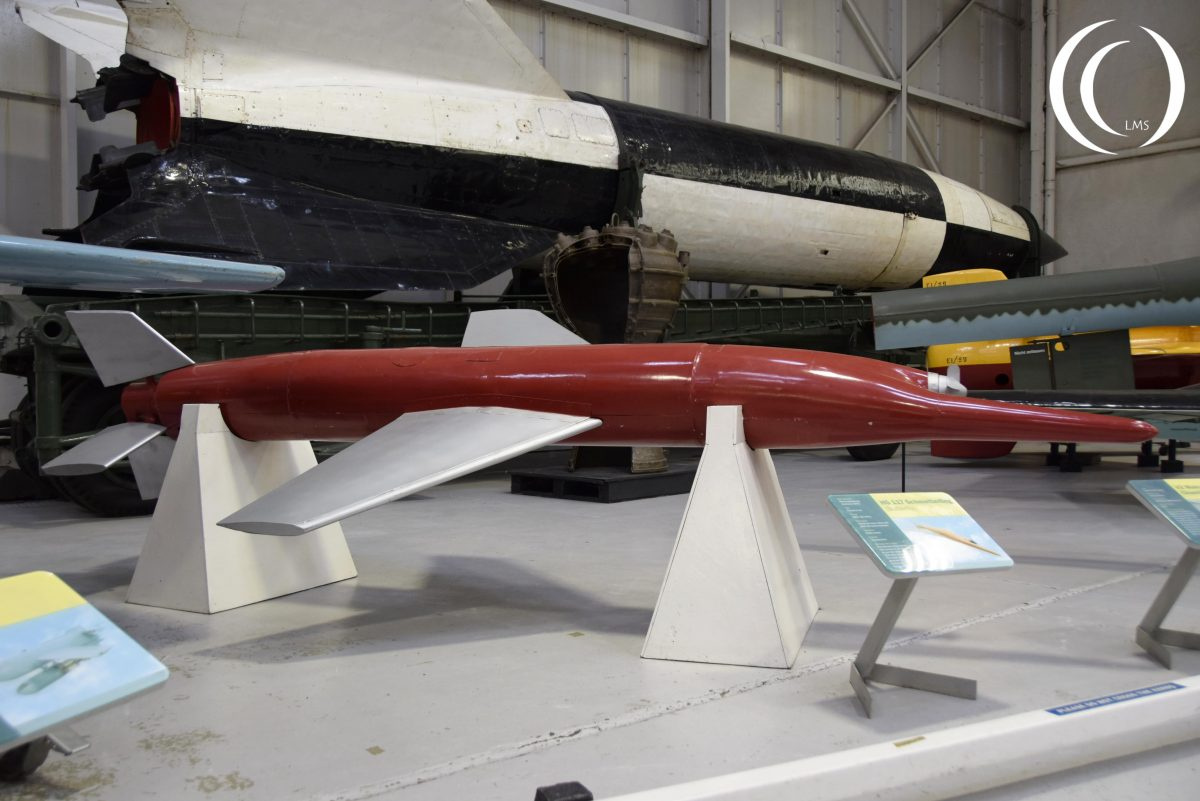
An air-to-air variant was also tested under the designation Hs 117H, released from a Heinkel He 111. The air to air missile did not use the two booster rockets. In 1944 at the, Peenemünde peninsula, 23 successful test flights led to the order for production of the missile. In March 1945 – 150 Schmetterling rockets should be build every month with an upgrade up to 3000 units in December of 1945. In January 1945 the project was terminated by the Commander of the Division zur Vergeltung; Hans Kammler. The Hs 117 Schmetterling was never used in combat.
